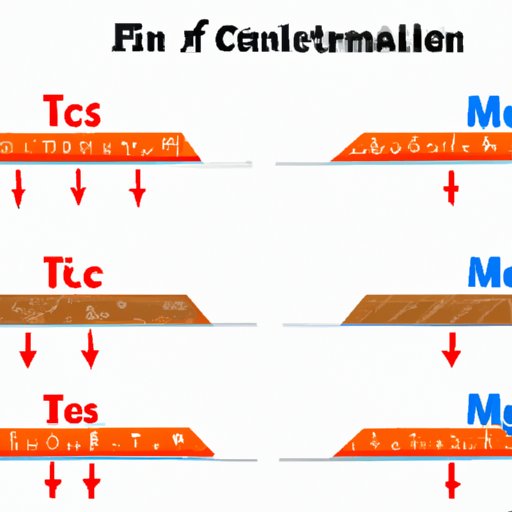
Introduction
Have you ever come across a measurement in inches and wondered what it would be in feet? Whether you’re tackling a home improvement project or measuring for clothing, knowing how to convert inches to feet is an important skill to have. In this article, we’ll explore the step-by-step process of converting inches to feet and provide you with helpful tips and tricks along the way.
A Step-by-Step Guide
The conversion formula for inches to feet is simple: inches ÷ 12 = feet. To convert any number of inches to feet, all you need to do is divide by 12. For example, if you have 36 inches, you would divide by 12 to get 3 feet. It’s that easy!
Let’s go through another example to show you how this works: if you have 72 inches, you would divide by 12 to get 6 feet. Here’s the breakdown: 72 ÷ 12 = 6. That’s how many feet you have.
To make things even clearer, here’s a simple diagram to illustrate the process:

Terminology Breakdown
To fully understand the conversion process, it’s important to know the terminology involved. Inches and feet are units of measurement used to measure length and distance. The conversion factor between inches and feet is 12, as there are 12 inches in a foot.
Think of it like a pizza: a foot is one whole pizza, and an inch is one slice. There are 12 slices in one pizza, just like there are 12 inches in one foot. When you divide the number of inches you have by 12, you’re essentially figuring out how many slices of pizza you have in a whole pizza.
It’s also important to note that inches are smaller than feet. This is why it’s necessary to convert inches to feet in certain situations where you need a larger unit of measurement.
Conversion Table
If you’re not a fan of doing math in your head, there’s an even easier way to convert inches to feet: by using a conversion table. Here’s a simple one to get you started:
| Inches | Feet |
|---|---|
| 1 | 0.0833 |
| 2 | 0.1667 |
| 3 | 0.25 |
| 4 | 0.3333 |
| 5 | 0.4167 |
| 6 | 0.5 |
| 7 | 0.5833 |
| 8 | 0.6667 |
| 9 | 0.75 |
| 10 | 0.8333 |
To use the table, simply find the number of inches you have in the left column, and read the corresponding feet value in the right column. For example, if you have 4 inches, you would look for the row that says “4” in the Inches column, and read “0.3333” in the Feet column.
Real-Life Examples
Let’s put this knowledge into practice with some real-life examples. Say you’re working on a DIY project and you need to cut a piece of wood that’s 63 inches long. To convert this to feet, all you have to do is divide by 12:
63 ÷ 12 = 5.25 feet
So you would need a piece of wood that’s 5.25 feet long.
Another example could be measuring for flooring in your home. You measure the width of your room and find that it’s 140 inches. To convert this to feet, again divide by 12:
140 ÷ 12 = 11.67 feet
You would need flooring that’s 11.67 feet wide to cover the width of your room.
It’s important to double-check your calculations to ensure accuracy and avoid mistakes. A common mistake is mixing up inches and feet, so make sure you’re clear on the distinction between the two units of measurement.
Video Tutorial
If you’re more of a visual learner, check out this helpful video tutorial. It will walk you through the conversion process step-by-step, with narration explaining each step and the reasoning behind it. Visual aids, such as animations or graphics, are also used to help you visualize the process.
Common Misconceptions
One common misconception people have about converting inches to feet is that it’s difficult or complicated. Hopefully, this article has shown you just how simple and easy it can be!
Another mistake people make is rounding incorrectly. Always remember to round to the nearest hundredth when dealing with decimal values in feet. For example, if your conversion result is 5.326 feet, you would round to 5.33 feet, not 5.3 feet.
Finally, always double-check your units of measurement to avoid mixing up inches and feet. One way to do this is to write down the unit of measurement next to the number, so it’s clear what you’re dealing with.
Conclusion
Now that you’ve learned how to convert inches to feet, it’s time to put it into practice! Whether you’re measuring for a home improvement project or shopping for clothing, knowing how to make accurate conversions is an important skill to have. By following the step-by-step guide, using a conversion table, and avoiding common mistakes, you can become more confident in your ability to make conversions in real-life situations.
Remember, practice makes perfect, so keep practicing until converting inches to feet becomes second nature to you.





